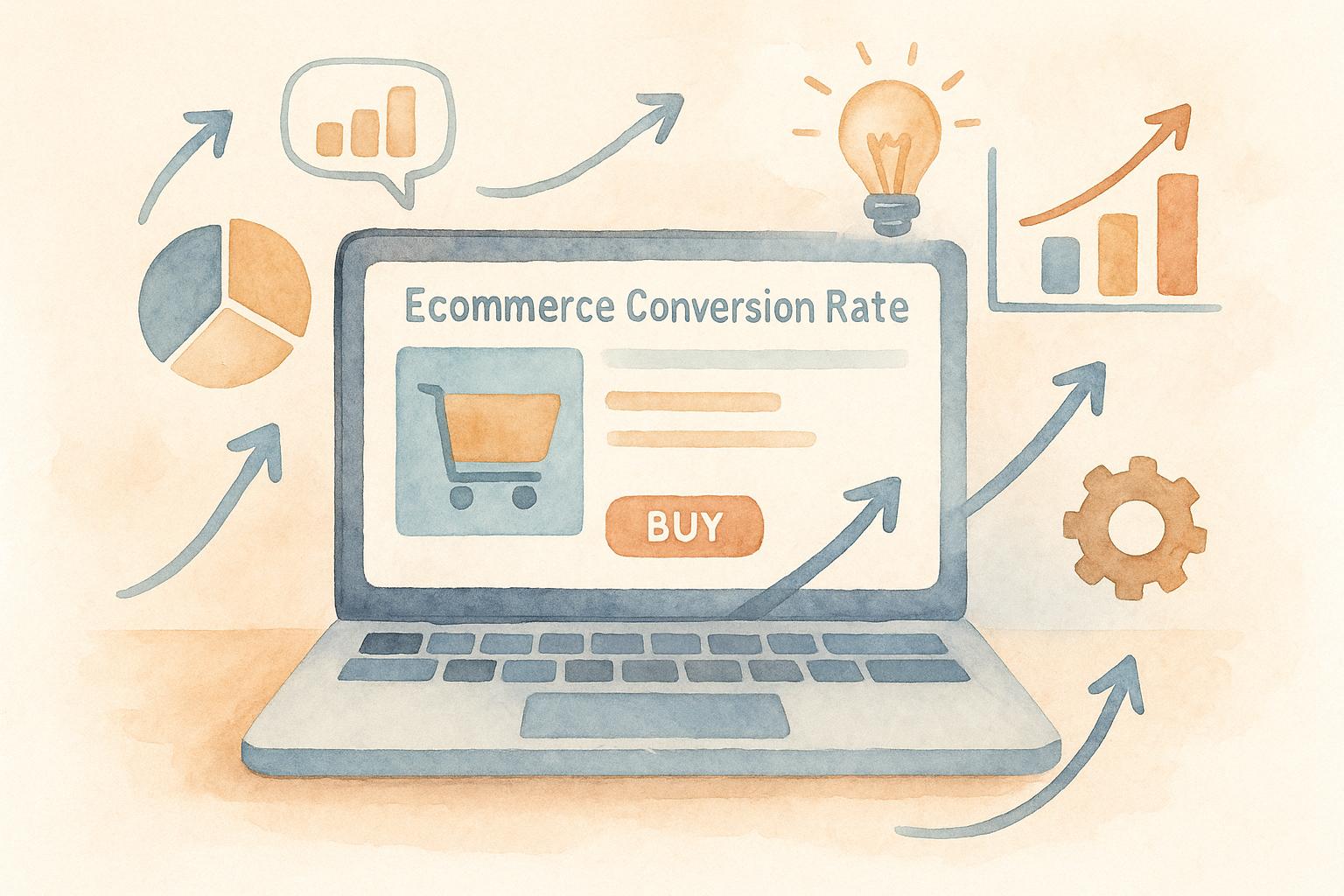In 2025, eCommerce return rates in Australia vary widely depending on the sales channel and product category. Returns are a growing challenge for businesses, impacting costs, customer satisfaction, and logistics. Here's what you need to know:
Return Rates by Channel:
Direct-to-consumer (DTC) websites face higher returns due to customer expectations for quality and service.
Marketplaces like Amazon and eBay show mixed return rates, influenced by seller policies.
Social commerce (e.g., Instagram, Facebook) has high returns driven by impulse buys.
Omnichannel retailers benefit from in-store return options, reducing overall return rates.
Product Categories:
Fashion leads in returns due to sizing issues.
Electronics are more stable but fluctuate with concerns over condition.
Home and garden products often face dissatisfaction caused by unmet expectations.
Beauty products see lower returns due to straightforward purchasing.
Key Drivers:
Australia's strong consumer protection laws and vast geography contribute to higher returns.
Seasonal trends, "buy-now-pay-later" services, and mobile commerce also play a role.
To reduce returns, businesses should focus on clear return policies, detailed product descriptions, and efficient return processes. With return rates averaging 20% online (compared to 8–10% in physical stores), addressing these challenges can improve profitability and customer loyalty.
Better Shopping, Smarter Returns: Winning Customer Loyalty in 2025
Return Rates by eCommerce Channel in 2025
For Australian eCommerce businesses, understanding return rates is key to evaluating performance and fine-tuning strategies. While exact benchmarks for return rates may not be universally established, trends reveal clear differences across various eCommerce channels.
Return Rate Trends by Channel
Return rates often vary depending on the purchase channel. For instance, direct-to-consumer websites tend to experience higher return rates. This is largely due to heightened customer expectations for service and product quality. On the other hand, marketplace platforms show more variability in return rates, as these depend heavily on individual seller practices and policies.
Social commerce, driven by impulse buys through platforms like Instagram or Facebook, often sees higher return rates. In contrast, omnichannel retailers benefit from offering in-store return options, which can help balance out their overall return figures.
How Product Categories Influence Returns
The trends in return rates also differ significantly across product categories, reflecting the unique challenges of each sector.
In the fashion and apparel industry, returns are particularly common. Issues with fit and sizing are a major factor, especially for Australian shoppers navigating international sizing standards. Meanwhile, electronics and tech products generally exhibit more stable return rates. However, these can fluctuate based on customer concerns about product authenticity or condition.
For home and garden products, dissatisfaction can arise when items don’t meet expectations due to limited ability to inspect them online. In contrast, beauty and personal care products often record lower return rates, as these items are typically more straightforward to purchase. Sports and outdoor equipment show varied return rates, which are influenced by the level of detail provided in product descriptions and how familiar customers are with the items.
What Drives Return Rates Across Channels
Understanding what influences return rates helps uncover the root causes behind them. These factors vary across sales channels, shaped by universal product characteristics and the distinct traits of the Australian market. Let’s break down how product-specific and local conditions play a role.
Product-Related Factors
The complexity of a product often determines how likely it is to be returned. Simple items like phone cases or basic stationery tend to have low return rates across the board. On the other hand, products that require detailed specifications - think computer parts or professional equipment - are more prone to returns, especially if sold through platforms that fail to provide thorough product information.
The quality of visuals and concerns about authenticity also differ by channel. Social commerce platforms, which often rely on user-generated content or influencer promotions, may lack diverse images or proper lighting, leading to mismatched expectations. Similarly, marketplaces with multiple sellers can face higher return rates for branded goods due to customers questioning authenticity. By contrast, direct-to-consumer channels typically inspire more trust, resulting in fewer returns for the same items. These patterns align with earlier observations about the distinct behaviours of various sales channels.
Sizing inconsistencies are another key issue, particularly in fashion. Marketplace platforms often suffer from higher return rates because individual sellers may not provide standardised sizing charts or detailed measurements. On the flip side, omnichannel retailers have an edge; customers can try items in-store before purchasing online or return unwanted online purchases at physical locations, reducing the overall likelihood of returns.
Australian Market Factors
Beyond product-specific issues, local market dynamics heavily influence return rates in Australia. For instance, the country’s strong consumer protection laws encourage buyers to shop with confidence, which can lead to increased experimentation with lesser-known sellers or social commerce platforms. However, this also means return rates are higher as consumers feel empowered to exercise their rights.
Australia’s geography adds another layer of complexity. With vast distances separating major cities, regional customers often can’t inspect products beforehand or conveniently return them to stores. This logistical challenge leads to higher return rates for omnichannel retailers serving remote areas, whereas online-only businesses tend to experience more consistent return patterns regardless of location.
Shipping costs also play a big role. Australians are particularly sensitive to shipping fees, often adding extra items to their carts just to hit free shipping thresholds - even if they’re unsure about keeping those items. Platforms offering free returns see even higher return rates, as customers treat these purchases more like a "try-before-you-buy" experience.
Mobile commerce is another factor driving returns, especially on impulse-driven platforms like social commerce. These platforms, optimised for mobile use, encourage quick purchases, which often results in more returns. However, the ease of processing mobile returns on these platforms can leave customers feeling satisfied despite the higher return rates.
Seasonal shopping trends also impact return behaviours in Australia. The Christmas shopping season, which coincides with summer, creates patterns distinct from Northern Hemisphere markets. For example, social commerce platforms see a spike in gift returns during January, while direct-to-consumer fashion brands experience higher returns for summer clothing purchased during cooler months.
Finally, payment preferences shape return patterns. The widespread use of buy-now-pay-later services in Australia has led to higher return rates on platforms that heavily feature these options. Since these services reduce the immediate financial burden, customers are more likely to take risks with their purchases, leading to more returns overall.
Australian eCommerce Returns Trends
The landscape of eCommerce returns in Australia is shifting, shaped by changing customer expectations and the unique conditions of the local market. Retailers are adapting their strategies to keep up with these changes, focusing on effective returns management and better customer service.
New Return Trends in Australia
Sustainability has become a major factor in how returns are handled. Shoppers are increasingly drawn to brands that offer carbon-neutral shipping or provide returnless refunds for low-value items - an approach that helps minimise waste.
Another trend gaining traction is the 'try before you buy' model, especially in social commerce. This allows customers to order multiple sizes or colours, keeping only what works best for them. It's a practical solution but requires retailers to refine their logistics.
Omnichannel strategies are also making a mark. Customers can now buy online and return items in-store, offering convenience even as it potentially increases return volumes. Features like real-time tracking of returns and instant refunds are further enhancing customer satisfaction and building loyalty.
In subscription commerce, there's been a shift too. Instead of cancelling entire subscription boxes, customers often return individual items, pushing businesses to adopt more flexible return policies.
These trends underscore how Australian practices stand apart from global norms, reflecting the specific needs and preferences of local shoppers.
Australia vs Global Return Rates
When compared to global figures, Australia experiences higher return rates, influenced by a mix of local factors. For one, the country's geographic isolation means many shoppers rely heavily on online purchases, as physical stores can often be out of reach.
Australia's strong consumer protection laws also play a role. These laws empower customers to return items that don't meet their expectations, encouraging more exploratory shopping habits. Seasonal factors add another layer - Christmas coinciding with the summer holidays leads to a spike in returns, especially for fashion and outdoor gear.
The rise of buy-now-pay-later services and mobile commerce also contributes. Mobile shopping, while convenient, can make it harder to evaluate products properly, leading to more returns.
Despite these challenges, positive return experiences often translate into stronger brand loyalty. Many Australian shoppers are likely to return to a retailer after a smooth and satisfactory resolution to their return. This makes an effective returns process not just a necessity but an opportunity for brands to build lasting customer relationships.
How to Reduce eCommerce Returns
Cutting down on returns is a win-win: it saves money and strengthens customer loyalty. In Australia, eCommerce return rates hover around 20%, significantly outpacing the 8-10% seen in physical stores. By fine-tuning policies, processes, and data management, businesses can make a real difference in tackling this issue.
Better Return Policies
A well-thought-out return policy isn’t just about damage control - it can actually give you an edge over the competition. With over 60% of shoppers checking return policies before purchasing, the way you handle returns can make or break a sale. The goal? Strike a balance between customer-friendly terms and operational sustainability.
Be upfront and clear. Your return policy should be easy to find and simple to understand. If customers are responsible for return shipping, say so clearly. Hidden fees or vague terms can erode trust and even increase return rates as customers feel deceived.
Under Australian Consumer Law, businesses must comply with the following:
You cannot deny consumer guarantees through "no refunds" policies.
For major product issues, customers must have the option of a full refund or replacement.
Customers cover return costs for items that are easy to post, while businesses handle returns for large or hard-to-move faulty products.
If a product is faulty, you must reimburse reasonable return costs.
Speed is key. More than 70% of online shoppers expect refunds within five days. Delays can frustrate customers and risk losing their future business.
Interestingly, extending your return window can reduce overall returns. A 60-day return policy, for instance, can ease the pressure on customers, boosting their confidence. And since only 5% of online orders are returned after 30 days, this change won’t significantly increase actual returns.
Prevent fraud without complicating things. To minimise return fraud, require proof of purchase and issue refunds to the original payment method or as store credit.
Using Data for Returns Management
Data is your best ally when it comes to managing returns. By gathering insights into why customers return products, you can zero in on the root causes and fix them. For example, return reason surveys can reveal whether issues stem from product quality, misleading descriptions, sizing problems, or shipping damage. Armed with this information, you can take targeted action.
If customers often return items because they’re "not as described", it’s time to upgrade your product visuals and descriptions. Since 88% of shoppers say detailed product content is crucial to their buying decisions, this is an area you can’t afford to overlook.
Tracking return patterns can also help with inventory management. Products with high return rates tie up resources, so factoring return likelihood into purchasing decisions can improve cash flow and storage efficiency.
Improving reverse logistics - how returns are processed and handled - pays off. Businesses that invest in this area report a 12% boost in customer satisfaction and a 4% reduction in costs. These insights pave the way for strategies that make returns less of a headache for everyone involved.
How Uncommon Insights Can Help

Reducing return rates isn’t just about tweaking policies - it’s about aligning your entire operation with customer expectations. That’s where Uncommon Insights comes in, offering data-driven strategies tailored to your needs.
Customer alignment roadmap. We help bridge the gap between what customers expect and what they receive, tackling one of the biggest drivers of returns. Our unit economics analysis digs into the true cost of returns, breaking it down by channel and product category. This often reveals which returns are worth preventing versus which ones should be processed more efficiently.
Retention-focused strategies. Did you know 92% of shoppers are likely to buy again if the return process is easy? We’ll work with you to design policies and processes that turn returns into opportunities to build loyalty.
Through weekly updates and close collaboration, we help your team implement changes that deliver measurable results. Our AI tools make sense of return data quickly, uncovering patterns that might otherwise go unnoticed.
For Australian eCommerce brands generating $1M-$10M in revenue, our tailored strategies address the unique challenges of the local market while setting you up for scalable growth. By combining actionable insights with hands-on implementation, we ensure that reducing return rates leads to stronger customer relationships and better profitability.
Key Takeaways
Main Findings
Australia’s eCommerce landscape in 2025 presents a mix of hurdles and opportunities. Online return rates continue to outpace those in physical retail, with noticeable variations depending on the sales channel and product category.
Consumer behaviour around returns is shifting. Shoppers are paying closer attention to return policies before making purchases. A smooth and well-structured returns process is no longer just a logistical necessity - it’s a chance to build trust and foster loyalty.
Preventing fraud and maintaining operational efficiency are becoming more critical than ever. The challenge for businesses lies in striking the right balance between customer-friendly policies and measures to curb return fraud while managing processing costs. Forward-thinking brands see returns not as a burden but as a crucial part of the overall customer experience.
These findings offer a clear direction for meaningful improvements.
Next Steps for Australian eCommerce Brands
To make the most of these insights, Australian eCommerce brands should focus on the following actions:
Dive into your return data: Look for patterns behind returns - what products, categories, or channels are driving them? Analyse the reasons customers cite and calculate the associated costs to uncover areas for improvement.
Refine your return policy: Ensure your policies align with customer expectations while meeting Australian Consumer Law requirements. Clearly communicate your terms, and if extending return windows is feasible, ensure your operations can handle the adjustment smoothly.
Address root causes of returns: Enhance the shopping experience by improving product descriptions, images, and sizing guides. Reducing confusion or mismatches can lower return rates and boost customer satisfaction.
Streamline return management: A seamless returns process can reduce purchase hesitation and even increase sales. Focus on providing detailed product information and transparent return policies to ease customer concerns. Keep an eye on key metrics - like return rates, processing times, and customer satisfaction - to refine your strategy and stay competitive in Australia’s eCommerce market.
FAQs
How do Australian eCommerce channels affect return rates, and what strategies can businesses use to manage these differences?
In Australia, return rates in eCommerce can differ greatly depending on the type of product and sales channel. For example, clothing and footwear tend to have higher return rates - around 25% and 17% respectively - primarily because of sizing challenges. These discrepancies can drive up operational expenses and affect customer satisfaction if not handled effectively.
To tackle this, businesses can implement customer-friendly return policies. Options like free return shipping, longer return windows, and convenient drop-off locations can strengthen trust and encourage loyalty. Using automation tools and data analytics is another smart move, as it can help streamline the returns process, cut costs, and improve overall efficiency. Additionally, providing clear and straightforward communication about return policies can enhance the customer experience and reduce unnecessary returns.
How do Australia's consumer protection laws and geographic challenges affect eCommerce return rates, and what can businesses do to adapt?
Australia's Australian Consumer Law (ACL) provides clear protections for consumers, ensuring they have the right to return faulty products. This means businesses must align their return policies with these legal requirements. For instance, policies that impose restrictive time limits or unnecessary conditions can not only breach the law but also discourage customers, potentially affecting return rates.
Adding to the complexity, Australia’s vast geography and remote areas create logistical hurdles. These challenges can drive up return costs and make the process more cumbersome. To tackle this, businesses can focus on simplifying their return systems, offering clear and upfront policies, and collaborating with local carriers to improve logistics. Taking these steps can help build customer trust and make the returns process smoother for everyone involved.
How can fashion eCommerce businesses reduce return rates caused by sizing issues?
Reducing return rates in fashion eCommerce, especially due to sizing issues, calls for a mix of smart technology, data analysis, and customer-focused strategies. One effective approach is using advanced sizing tools like virtual fitting rooms or AI-driven size recommendations. These tools help shoppers pinpoint their ideal fit before they hit "buy." Another essential step is offering detailed, accurate size charts that work seamlessly on all devices, giving customers the confidence to make informed choices.
Digging into return data using machine learning can reveal trends and sizing inconsistencies, helping businesses standardise sizes across different brands or offer more personalised recommendations. Clear product descriptions and encouraging customer reviews that include sizing insights can also ease doubts, resulting in fewer returns and a smoother shopping experience for Australian buyers.



